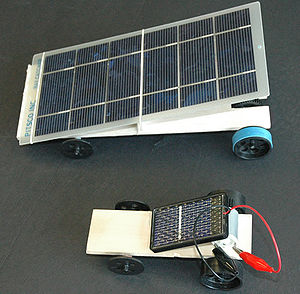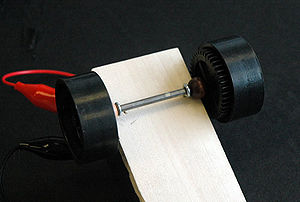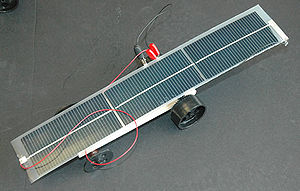Solar Car Derby
| K-12 Outreach Kits and Labs |
Overview
Model car races are a common science and engineering activity for youth groups because they are engaging, open-ended and have the excitement of competition. This gives us the chance to work in some great science concepts and engineering practices. The level of presentation can also be modified for different audiences. The Pitsco Sunzoom Lite ($8.95) and Ray Catcher Sprint Kit ($59) have all the materials for an extremely basic solar powered model car.
Procedure
In modeling good scientific experimental practice and engineering design methods its good to start with a basic "control" version of the car just as the kit instruction describe and then try to optimize various factors. As a leader you can guide students through this process with a "socratic" dialogue. For example ask "What could you do to make your car go faster, and win the race?" If they suggest adding more solar cells then "How would you connect the additional solar cells?" , "How would you support them?", and "What do you predict the result will be?
Basic construction
The basic design of the car is a piece of thin wood with screw eyes that serve as bearing for attaching the axles. The kits come with a set of gears which fit either on the motor shaft or on the axles. Be sure to make sure the motor engages the drive gear on the axle without rubbing or slipping.
Wiring
Solar Cell area
Solar Cell Angle
External Links
NREL Model Solar Car Lesson Plan
Source for Materials
Pitsco polycrystalline solar panel with clips $2.95



